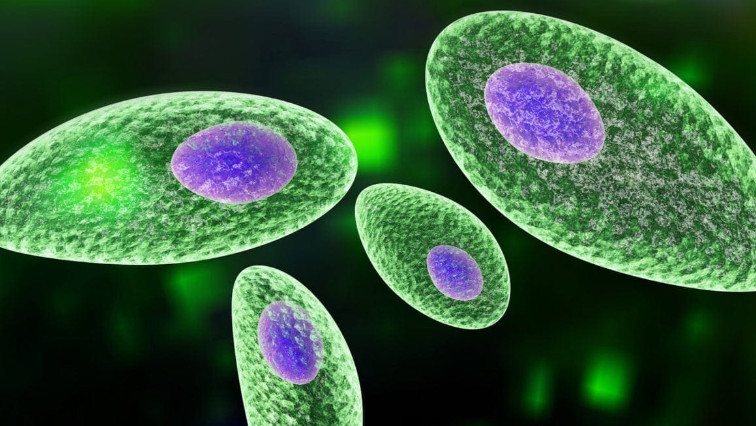The parasite, Toxoplasma gondii, can cause lifelong infection. It lives in the brain (and sometimes the eyes) of about 30 percent of all humans. When someone drinks contaminated water, eats infected undercooked meat or is exposed to these parasites in soil, it can result in lasting damage.
Infection from unrecognized exposure to this microscopic parasite can harm the eyes, damage the brain and, in some cases, lead to death. Toxoplasmosis, according to the CDC, is the second most frequent cause of foodborne-associated death in the United States.
These parasites tend to attack unborn babies, newborns, children and adults. While most healthy adults who are exposed to the parasite never experience any serious symptoms, dormant, unrecognized, smoldering infections can emerge years later in immune-compromised patients. There is currently no vaccine to protect people from this infection.
"We urgently need a vaccine, as well as new and better medicines, to prevent and treat this infection," said the study's senior author, Rima McLeod, MD, Professor of Ophthalmology and Visual Science and Pediatrics at University of Chicago and a leading authority on toxoplasmosis.
"Millions of people suffer from these infections," McLeod said. These neglected infections are often detected too late to prevent irreversible damage, and some patients die if the infection is untreated. Until now, no vaccine has been available for humans and no known medicine in clinical use has been able to eliminate the chronic, encysted form of Toxoplasma.
In an article published in the journal Scientific Reports (Nature), the research team unveiled a clever "immunosense" approach - the use of Self-Assembling Protein Nanoparticles (SAPNs). These have been engineered to boost each component of the immune system.
The goal is to protect humans from this common, harmful and sometimes lethal parasite."Engineering and characterization of a novel Self Assembling Protein for Toxoplasma peptide vaccine in HLA-A*11:01, HLA-A*02:01 and HLA-B*07:02 transgenic mice" was published online on October 12, 2020.
The team used cell-based and murine models. These mouse models have human immune-response genes to mimic how people can fight the infection. The SAPN scaffold serves as a stimulus, boosting the innate immune response and delivering components of the vaccine to relevant target cells.
"Especially important," McLeod said, "these novel SAPNs have been engineered to have the size, shape and ability to produce immune responses against Toxoplasma gondii. This triggers a protective effect."
The team's approach has been quickly adopted by other investigators. There is ongoing work to immunize against herpetic eye disease, SARS-CoV-2 (COVID19), HIV, malaria and influenza viruses.
The researchers found that their SAPN scaffold can fold reliably into a stable shape. As the immune system perceives it as a foreign invader stimulating a protective immune response, the scaffold can incorporate components that stimulate an immune response against the genetic variants of the parasite.
This can be tailored for people of differing genetic backgrounds. The vaccine becomes a multisystem targeting weapon. The researchers named their new weapon "ToxAll." They describe it as a "multi-epitope, multi-functional, toxoplasmosis nano-vaccine."
It contains crucial immunity-stimulating components, mixed with an adjuvant, known as GLA-SE, that appears to be powerful and safe in humans. This type of vaccine, with components from plasmodia, has already been tested in primates for malaria, and is moving into the clinic.
Prior infections with T.gondii before pregnancy can protect a pregnant woman from passing the infection to her unborn child. But when a mother first acquires the infection during pregnancy - before her body can mount an immune response - the parasite can cause significant harm to the unborn child.
The investigators first created a live, attenuated vaccine that can protect mice against toxoplasmosis. Prior natural infection of humans can confer protection, and live vaccines could protect mice. These live vaccines, however, can have safety concerns.
ToxAll was created as a synthetic vaccine that could stimulate danger signals, alerting the immune system to focus on foreign invaders. A crucial part of the process is to create a design with the right properties, assembling particles into predictable shapes that resemble viruses, then enabling the fragments of components of the parasite to educate the "adaptive memory" of the immune system. This creates a long-lasting immune response, including antibodies and protective T lymphocytes.
Protection with the full SAPN, at this point, is not yet available, "but is under development with promising results," McLeod said. The team is working to expand the use of additional fragments of the parasite. They hope to create a next generation vaccine that could provide lasting immunity against toxoplasmosis - one that could offer a novel, safe, synthetic vaccine to prevent this disease.
The next step is to develop vaccines as part of a "toolbox" that also includes new medicines and novel use of older medicines for prevention and treatment of toxoplasmosis. The team has applied their clinical and laboratory experiences to understand the infection and devise ways to prevent it, using immunology, genetics, bioinformatics and systems biology to develop and enhance the vaccine and make certain it can help humans worldwide.
Read the original article on News Medical.







